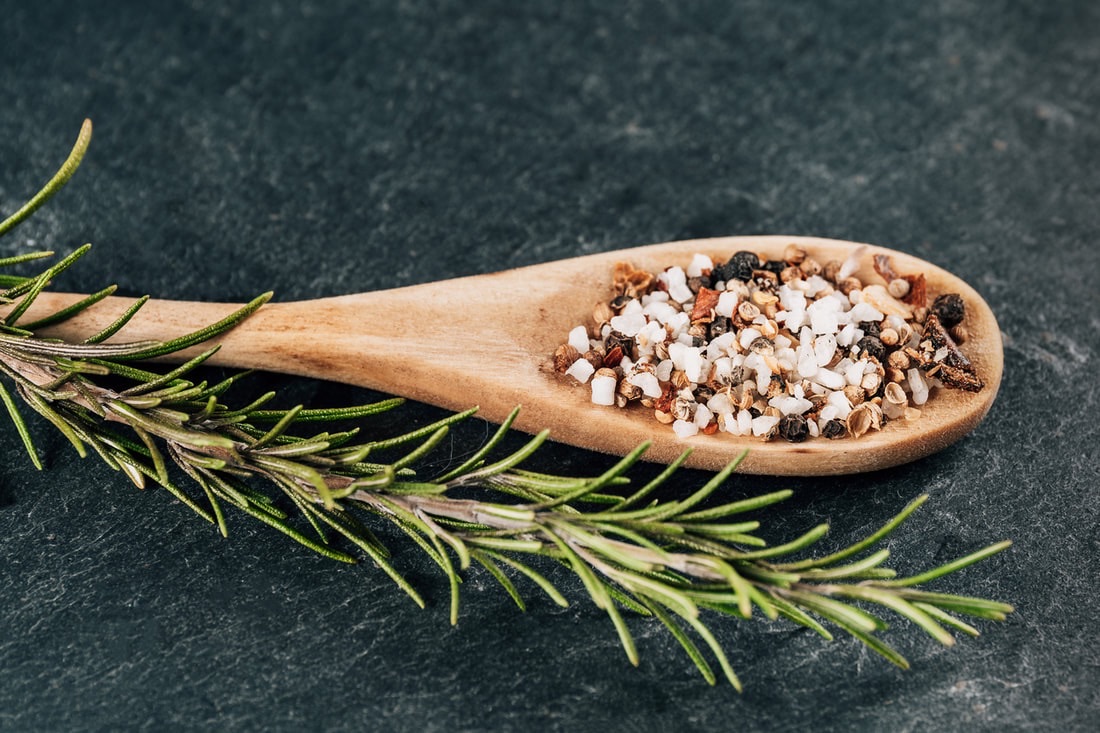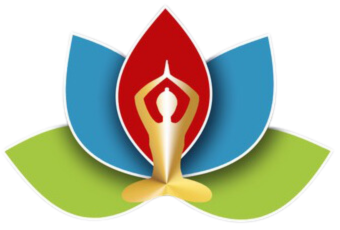Here are 10 helpful tips for your everyday life with the Ayurvedic diet
1. pay attention to a real feeling of hunger!
Eat when you are hungry! This way you can be sure that your body actually needs the food. Yes, it really is that simple. Observe when and in which situations you eat. Out of habit? Boredom? Sociability? Who still knows the feeling of real hunger today? At a time when food and snacks are constantly available? Yet real hunger is THE signal from your body: Agni, the digestive fire, is active. Your body is ready to eat.
2. drink enough!
Drink enough to strengthen your Agni! Forget all the recommendations that you should drink half a liter of (cold) water directly before eating so as not to eat too much.
It is best to drink HOT water about 30 minutes BEFORE eating or even after eating. Hot water aids your digestion.
Do you drink water at room temperature? Please note that your body must first heat this water to normal body temperature so that it can process it! However, this weakens your body fire, which means that the flame of Agni burns only small and sparsely.
The intake of further food makes it more difficult to burn and the “cooking” in the body is only achieved up to a certain temperature. Everything else that is not burned will remain undigested in your intestines. For this reason alone, it is so important to bring drinks to body temperature (36.7 degrees) and thus support your body fire.
And that means you can drink half an hour before and/or after eating! However, too much liquid dilutes the digestive juices and the food would be washed out rather than digested. Treat yourself to a small glass of hot (ginger) water WITH your meal – and only if it is really essential.
3. chew consciously
You probably know the well-intentioned “old” advice: “Well chewed is half digested!”. 32 teeth grind 32 times every meal. Consciously salivate the food (a matter of practice and habit) and actually chew well and consciously. In this way, your food is ground up and mixed well with the digestive enzymes from your saliva. As you know, your stomach has no teeth, so it doesn’t have to struggle with half slices of cucumber…
Therefore, the recommendation is to chew each bite 32 times. But what if your teeth are missing and have not been replaced? Your food should still be chewed well. Your teeth are so important for your digestion… That’s why we recommend regular visits to the dentist for check-ups and sensible dental care at home. Use toothbrushes (always brush from red to white), dental floss or interdental brushes every evening so that your teeth can recover during the night. Also clean your tongue every morning and evening to reduce the amount of putrefactive bacteria lingering in your throat. A metal tongue scraper can serve you well here; alternatively, or if you have forgotten to take it with you on your trip, you can also turn a coffee spoon upside down and scrape your tongue with it.
4. the optimal amount of food in the Ayurvedic diet
This brings us to the right amount of food for you: eating in moderation is an attitude. Just look at your two hands, they are the yardstick for your food intake. One third of your stomach should be filled with solid food, one third with liquid or softer foods (such as soup, porridge, soft vegetables) and one third should remain free so that your stomach has enough room to move the chyme.
If you feel that you are 80% full, simply stop eating. The feeling of fullness is somewhat delayed anyway. If you overload your stomach, you will have a feeling of fullness because your stomach has trouble mixing the large amount of food with digestive juices. Eating too little food per meal very often leads to hunger pangs. And it inevitably leads to the yo-yo effect of the blood sugar level at the moment you start eating again. The constant ups and downs of your blood sugar level not only makes you unhappy, but also awakens the “craving” for chocolate and the like and thus has an extremely unfavorable effect on the function of your pancreas. And this in turn promotes the development of diabetes! A general recommendation in the Ayurvedic diet is therefore to eat two rather than three meals a day. There should be about 4 to 5 hours between your meals, during which your stomach can digest everything well before the next meal is processed. Avoid snacking between meals at all costs.
5. the right time to eat according to the Ayurvedic diet
You have no appetite in the morning, so prepare yourself a breakfast and take it with you for later. Your digestive power increases significantly in the course of the morning. Your Agni is at its strongest between around 10 am and 2 pm. This means that the biggest meal of the day should be your lunch. Then it can be digested well until the evening and does not burden your metabolism at night when your body is regenerating. You should avoid raw food in particular after around 2 pm until around 3 pm. Even though raw food is considered a light diet, it is often overlooked that it is anything but easy to digest. You are definitely not doing yourself any good if you eat a large plate of salad in the evening! Salad sits in your stomach at night and ferments. It’s better to eat a light vegetable soup, some cereals and a little (vegetable) protein in the evening. Meat and fish, on the other hand, are animal proteins and therefore difficult to digest. It’s better to eat both at lunchtime!
6. hot ginger and/or lemon water stimulate your digestion and metabolism
It is best to drink a large glass of warm to hot water first thing in the morning on an empty stomach! This will help you to compensate for the loss of fluids during the night and stimulate your digestive tract. A few dashes of lemon juice make the water alkaline and also stimulate your digestive system. If you tolerate it well, you can add a few slices of (dried) ginger. As mentioned, ginger stimulates Agni (body fire).
But here, too, it is important to consider your individual constitution! For some people, too much ginger leads to heartburn or dries out the intestines too much.
7 “Ayurvedic nutrition” in India, the country of origin, and here
Eating according to Ayurvedic teachings means following a philosophy that provides us with guidelines and uses regional products. Indian products can be eaten in India. One of the most widespread misconceptions about the Ayurvedic diet is the idea that we should only eat rice and dhal (lentils) seasoned with cumin, turmeric and coriander. Yet the cuisine in India varies greatly – in Kerala, in the hot, humid south, the food is very different from that in the rather dry interior. And cooking is even more different in the north or in the Himalayas. Completely different oils are used, completely different types of rice and lentils. The preparation of vegetable dishes also varies, depending on what is growing and in season, as do the herbs and spices.
8. spices and herbs
Feel free to use spices and fresh herbs – the Ayurvedic approach means, as I said, to season “Indian”, to leave it in India. However, the “regional and seasonal” approach also applies to us: all our local herbs taste great and have health-promoting properties! Whether wild garlic, dill, tarragon, sage… experiment! And find out what tastes best with what. Take a look at your dosha, THE constitution you live by! Every food and spice does something to our functional system. It balances, lowers or raises.
9. quality and freshness
The quality and freshness of our food must be right – the fresher and therefore “livelier” it is, the more vitality we gain from our food! The shorter the transportation routes, the fresher the fruit and vegetables on our plates. Choose regional and seasonal products much more than before. Organic produce is preferred, as it is sprayed and fertilized less, because the poison in the fields also ends up on our plates.
10. your inner attitude towards a healthy, Ayurvedic diet
Taking all the tips to heart and putting yourself and others under pressure is counterproductive. The most important thing is to enjoy our food with gratitude and mindfulness! Make the dining atmosphere as relaxed as possible! Whether at home at the kitchen table or during a break in the office: pause for a moment and become aware of what you are eating now in order to maintain your body on the one hand and enjoy it at the same time, to give yourself a break and also to recharge emotionally and mentally.
My conclusion: Let’s stay relaxed with the Ayurvedic diet!
It is our habits that shape our body and character. It is important to bring new habits into our everyday lives step by step with joy and ease. I myself occasionally enjoy things that, according to Ayurvedic nutritional science, fall into the category of “unfavorable combinations” and are therefore unsuitable for my constitution.
However, I try to eat about 80% of my diet in the form of foods that are good for me. 20% of my food is the part I feel like eating. So 4/5 to 1/5. The yardstick here remains my hands.


